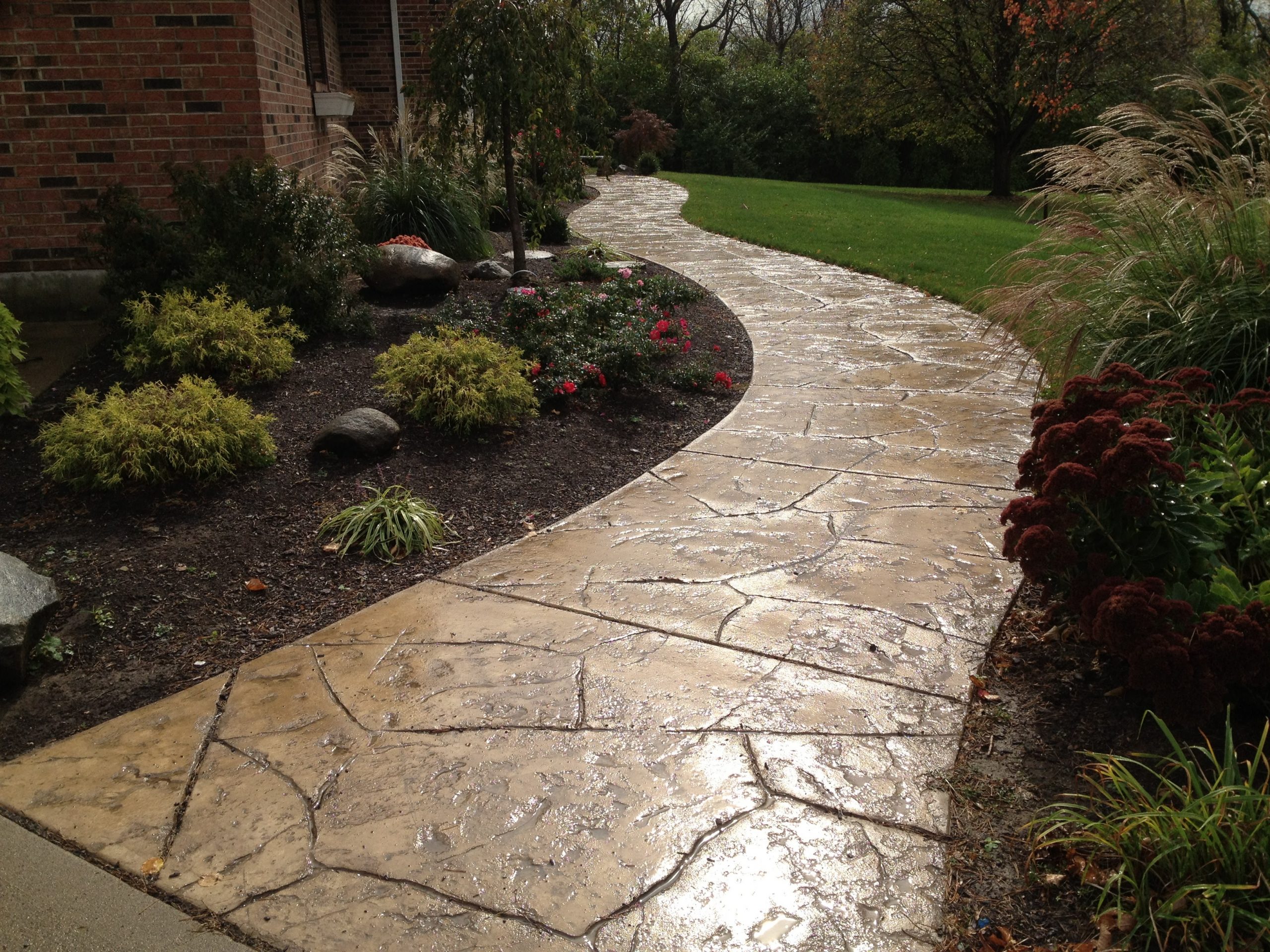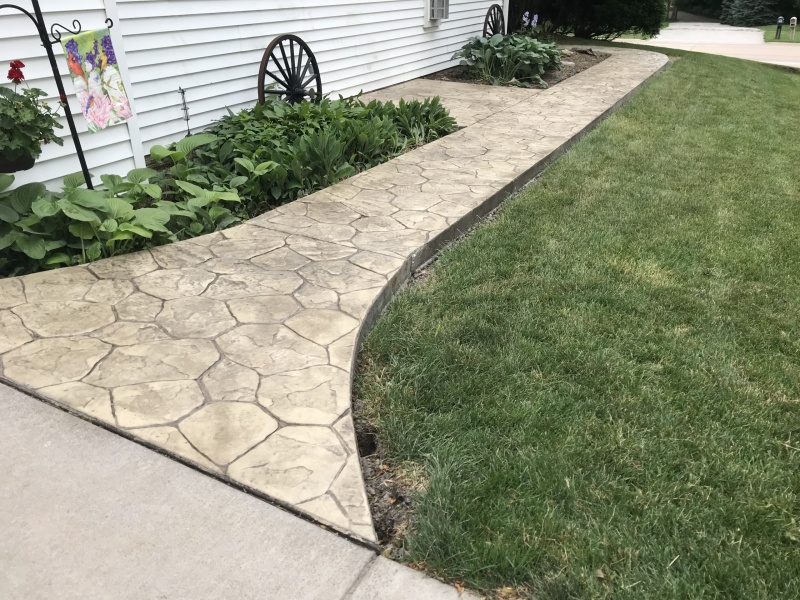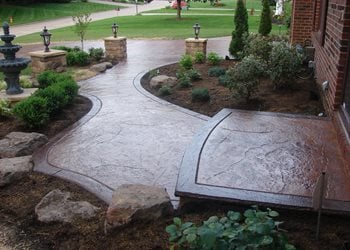Introduction to Decorative Concrete Sidewalks
Have you ever walked down a street and marveled at the beautiful concrete sidewalks? Decorative concrete sidewalks are becoming increasingly popular for homeowners and businesses alike. As someone who has witnessed the transformation of dull concrete into stunning designs, I can assure you that these sidewalks can significantly enhance the curb appeal of any property.
In this article, we will explore everything you need to know about decorative concrete sidewalks, from the materials and designs to installation techniques and maintenance. Let’s dive in!
What Are Decorative Concrete Sidewalks?
Decorative concrete sidewalks are not your average gray slabs of concrete. Instead, they are customized surfaces designed to improve the aesthetic appeal of outdoor spaces. By incorporating various techniques such as stamping, staining, and coloring, decorative concrete can mimic the look of natural stone, brick, or even wood, offering versatility and creativity.
Benefits of Decorative Concrete Sidewalks
1. Aesthetic Appeal
One of the primary reasons homeowners choose decorative concrete sidewalks is for the beauty they bring. Available in various colors and patterns, they can complement the architecture of your home perfectly.
2. Durability and Longevity
Decorative concrete sidewalks are as durable as traditional concrete. Properly installed and maintained, they can withstand heavy foot traffic and harsh weather conditions. This longevity makes them a smart investment for any property.
3. Low Maintenance Requirements
Unlike pavers or gravel, decorative concrete sidewalks require minimal maintenance. A simple cleaning with a pressure washer and occasional resealing can keep them looking new for years.

4. Cost-Effective Option
While the initial cost of installation may be higher than standard concrete, the long-term savings on maintenance and replacement make it a cost-effective choice over time.
Common Decorative Concrete Techniques
1. Stamped Concrete
Stamped concrete involves pressing patterns and textures into freshly poured concrete, creating an appearance that resembles stone, brick, or tile.

2. Stained Concrete
Staining involves applying a color treatment to the surface of the concrete, enhancing its beauty while allowing some of the original texture to show through.
3. Exposed Aggregate
This technique reveals the natural aggregates in the concrete mix, providing a unique texture and appearance.

4. Overlay Systems
Concrete overlays can be applied over existing sidewalks to rejuvenate their appearance, offering a cost-effective way to upgrade worn-out surfaces.
Choosing the Right Design for Your Sidewalk
Selecting the perfect design for your sidewalk can be overwhelming due to the plethora of options available. Consider the following elements when choosing your design:
- Color Scheme: Ensure the color matches or complements your home’s exterior.
- Pattern: Think about the overall theme of your yard and select a pattern that ties everything together.
- Texture: Smooth finishes are great for modern designs, while rough textures suit rustic themes.

Installation Process of Decorative Concrete Sidewalks
1. Planning and Design
The first step is to design your sidewalk. Consider the layout, dimensions, and patterns you want to incorporate. Consulting with a professional can help refine your ideas.
2. Preparing the Site
The installation site should be cleared of any debris, vegetation, and topsoil. This step ensures a stable base for the concrete.

3. Framing
Construct a frame using wooden planks to form the desired shape of your sidewalk before pouring the concrete.
4. Pouring and Finishing Concrete
After mixing the concrete, it is poured into the prepared frame. Once set, the finishing techniques (like stamping or staining) can be applied.

5. Curing
Allow the concrete to cure adequately. This process is vital to achieving the desired strength and durability.
Maintaining Your Decorative Concrete Sidewalk
Regular maintenance is crucial to ensuring your decorative concrete sidewalk remains beautiful and functional over time. Here are some tips:
- Regular Cleaning: Use a pressure washer or garden hose to remove dirt and debris.
- Sealing: Reseal your concrete every few years to protect it from staining and weather damage.
- Address Cracks Promptly: If you notice any cracks, fix them as soon as possible to prevent further damage.

Pros and Cons of Decorative Concrete Sidewalks
Pros
- Enhances property value and curb appeal
- Durable and weather-resistant
- Versatile design options
- Low maintenance care required
Cons
- Higher initial cost compared to standard concrete
- Requires professional installation for best results
- Can be slippery when wet, depending on the finish
Cost of Decorative Concrete Sidewalks
The cost of installing decorative concrete sidewalks can vary depending on several factors, including design complexity, materials used, and the size of the area. Below is a comparison table to give you an idea of what to expect.
| Technique | Average Cost per Square Foot | Description |
|---|---|---|
| Stamped Concrete | $8 – $15 | Replicates the look of stone or brick with patterns. |
| Stained Concrete | $2 – $4 | Adds color and enhances the surface of the concrete. |
| Exposed Aggregate | $6 – $10 | Reveals the natural stones in the concrete for texture. |
| Overlay Systems | $3 – $7 | Cost-effective way to renew existing concrete. |
FAQs About Decorative Concrete Sidewalks
What kind of concrete is used for decorative sidewalks?
Typically, a high-strength concrete mix is used that can withstand the environmental factors and foot traffic. Specifically, mixes designed for decorative purposes may also contain additives to enhance appearance and durability.
How long do decorative concrete sidewalks last?
With proper installation and maintenance, decorative concrete sidewalks can last 20-30 years or more. Regular sealing and repairs can significantly extend their lifespan.
Are decorative concrete sidewalks slippery?
Depending on the finish, decorative concrete sidewalks can be slippery when wet. Textured finishes can help alleviate this issue, but it’s essential to consider your local climate and conditions when selecting a surface.
Can I install decorative concrete myself?
While some homeowners may attempt DIY installation, it’s recommended to hire a professional for the best results, particularly with more complex designs like stamping or staining.
Conclusion
Decorative concrete sidewalks are not only a practical addition to your outdoor spaces, but they also provide beauty and character to any property. With numerous design options and low maintenance needs, they can be a fantastic investment for homeowners and businesses alike.
If you decide that decorative concrete sidewalks are right for you, be sure to work with a reputable contractor who can guide you through the process and help you achieve the look you desire.